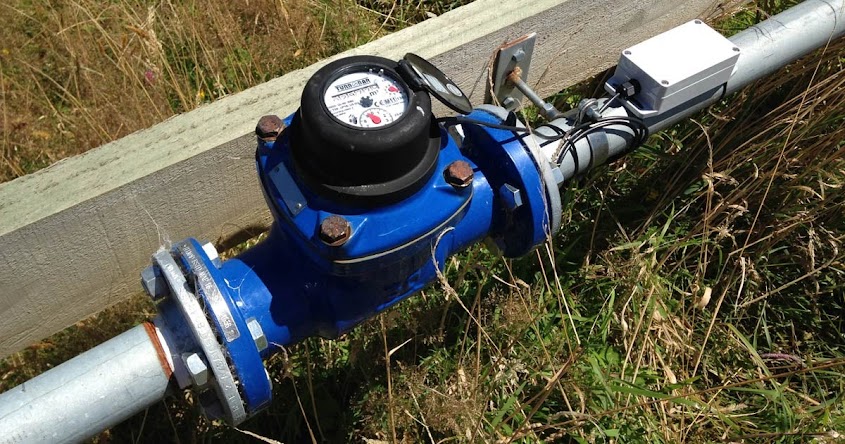How to choose temperature transmitters?
It is an instrument for measuring the linear, nonlinear, mass, or volume flow of liquids or gases. When choosing a flowmeter from KEVIT Industrial, there are several intangible factors that need to be considered at the specific site, such as the familiarity of the plant staff with the flowmeter, their experience with calibration and maintenance, spare parts availability, and the mean time between historical failures, to name a few.
Picking Skills
When choosing a flow meter,
follow these steps:
[1] First, the properties
of the test fluid must be confirmed.
[2] Next, the purpose of
measurement should be clear. At this time, it is necessary to determine a
detection system that can be selected, considering the properties such as
accuracy and flow range.
[3] After determining the
detection method, carefully understand the model specifications and decide.
[4] Finally, compare costs. Since it also takes time to dismantle the flowmeter, the decision must be made considering not only the unit price of the product but also the maintenance time after installation and the cost of setup or troubleshooting. Generally speaking, when the unit price of a product is low, frequent maintenance may be required, or failures may occur frequently.
Introduction to Magnetic Flowmeters
A magnetic flow meter (magnetic flow meter) is a flow meter that measures volumetric flow without moving parts and is ideal for wastewater applications and conductive or water-based sewage treatment. Hydrocarbons, distilled water, and other non-aqueous solutions cannot be used with magnetic flow meters. Magnetic flow meters are also perfect for applications requiring little maintenance and little pressure drop.
Working principle
The operation of the magnetic flowmeter is based on Faraday's formula. According to this equation, any conductor's voltage is proportional to its velocity orthogonally crossing a magnetic field.
Installation Considerations: Choose a location where the flow profile is well formed and disturbance effects are eliminated to install the sensor. It is desirable that the pipeline on the upstream side of the installation location of the flowmeter is straight and has a length of at least ten times the diameter. The downstream side also has a size of 5 times the diameter. In some situations, a distance of 20 or more pipe diameters upstream of the sensor location is required to ensure a sufficient turbulence profile. Insertion-type magnetic flowmeters are susceptible to air bubbles in the electrodes.
Grounding requirements: Magnetic flow meters are subject to electrical noise in most pipe systems. In plastic pipe systems, fluids carry significant levels of static electricity and should always be grounded by the best magnetic flow meter suppliers in Oman.
How to choose a magnetic flow meter
Magnetic flowmeters have only two non-moving parts in contact with the measured fluid medium. A pair of electrodes that measure the fluid's velocity and a liner that shields the flow body from the liquid. Unlike conventional mechanical flow measurement methods like turbine or positive displacement, it uses rotating mechanical gears and bearings to measure flow. This flow measurement design allows the magnetic flowmeter to be used with virtually any conductive liquid, regardless of density, viscosity, chemical composition, or fluid state/particle count.
Pressure sensor/pressure gauge
pressure gauges support positive and negative pressure measurement of various fluids, from liquids and gases to mist air, including environment-resistant digital pressure sensors that are compatible with IO-Link and can measure temperature at the same time. Pressure sensors/pressure gauges that pursue ease of use, such as being highly installable and compatible with harsh environments, are compatible with various applications.
A pressure gauge's definition
An instrument that measures and displays pressure is called a pressure gauge. There are many pressure gauges, such as general-purpose pressure gauges, compact pressure gauges, sealed pressure gauges, glycerin-filled pressure gauges, etc., depending on the set location and type of fluid.
These pressure gauges have a mechanical structure and are in contact with the fluid inside, so if they become clogged, they will not give accurate readings. Therefore, regular maintenance and parts replacement are required. Various Pressure Gauge suppliers in Oman match the fluid's characteristics, but care must be taken when dealing with fluids that clog easily. Also, if multiple pressure gauges are installed, variations may occur due to differences in the state of the pressure gauges.
Water meters
A water meter is also called an accumulating volume meter because it measures the amount of tap water and performs usage fee transactions. Under the Measurement Act, water meters are treated as specified measuring instruments, and you can buy them from Water Meters Suppliers in Oman.
The dial of the water meter
There are two types of dials for water meters: wet type and dry type. Wet meters that have been used for a long time have dials submerged in water. As a result, problems such as fading and disappearance of the scale over time have been pointed out.
The dry type, which has been used in recent years, has a structure in which the display part with the scale is separated from the water flow part by a pressure plate. It is resistant to dirt and condensation, so it has the advantage of an easy-to-read display and slight deterioration over time. Since it is necessary to periodically check the indicator value even with a pulse-type remote meter, it would be easier to read if the meter is a direct-reading type.
Conclusion: If you have any
particular flow measurement difficulties, you can contact Flow
Meters Suppliers in Oman; flow meter application engineers will help
you better understand your flow meter.


.png)
Comments
Post a Comment